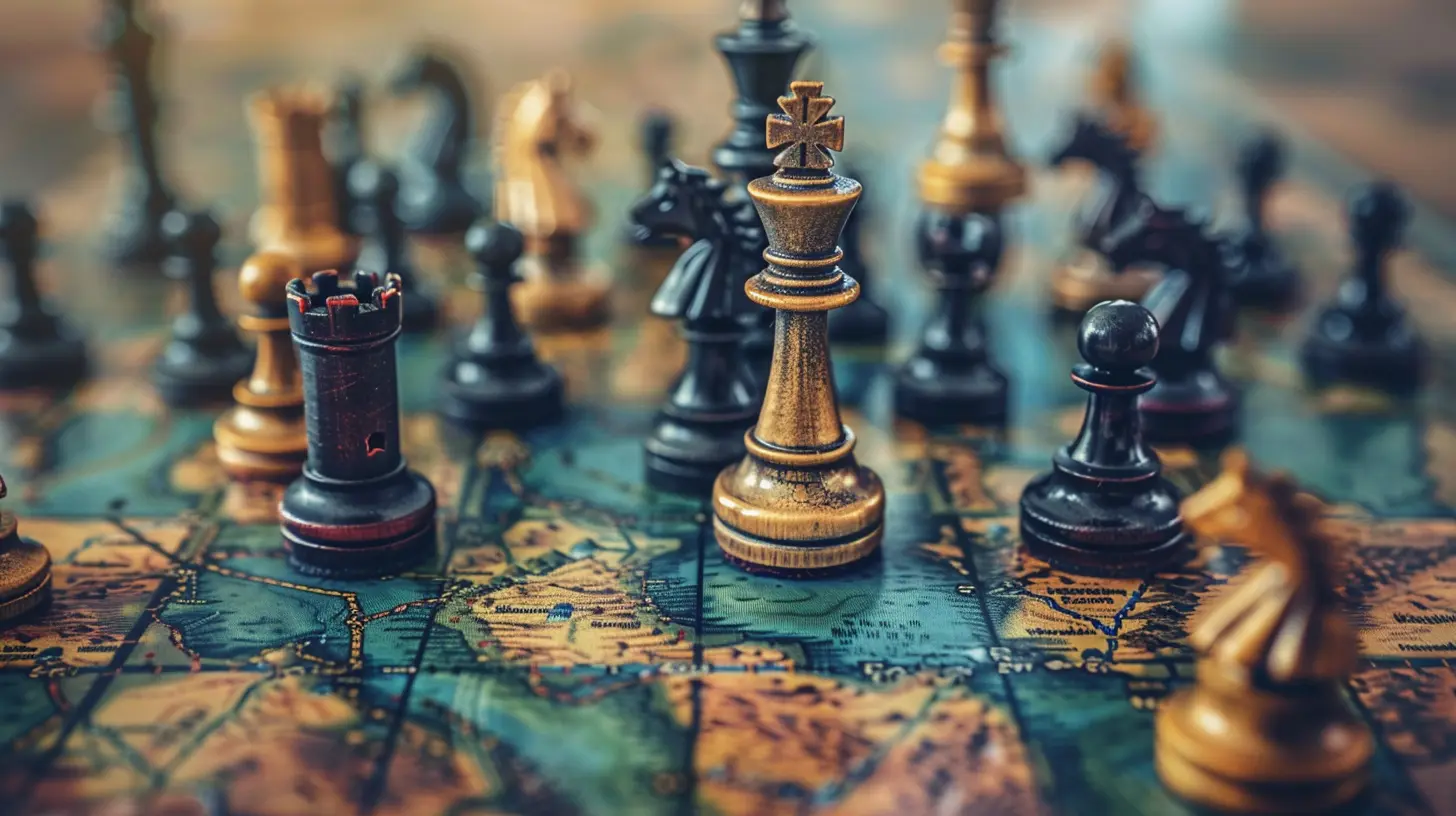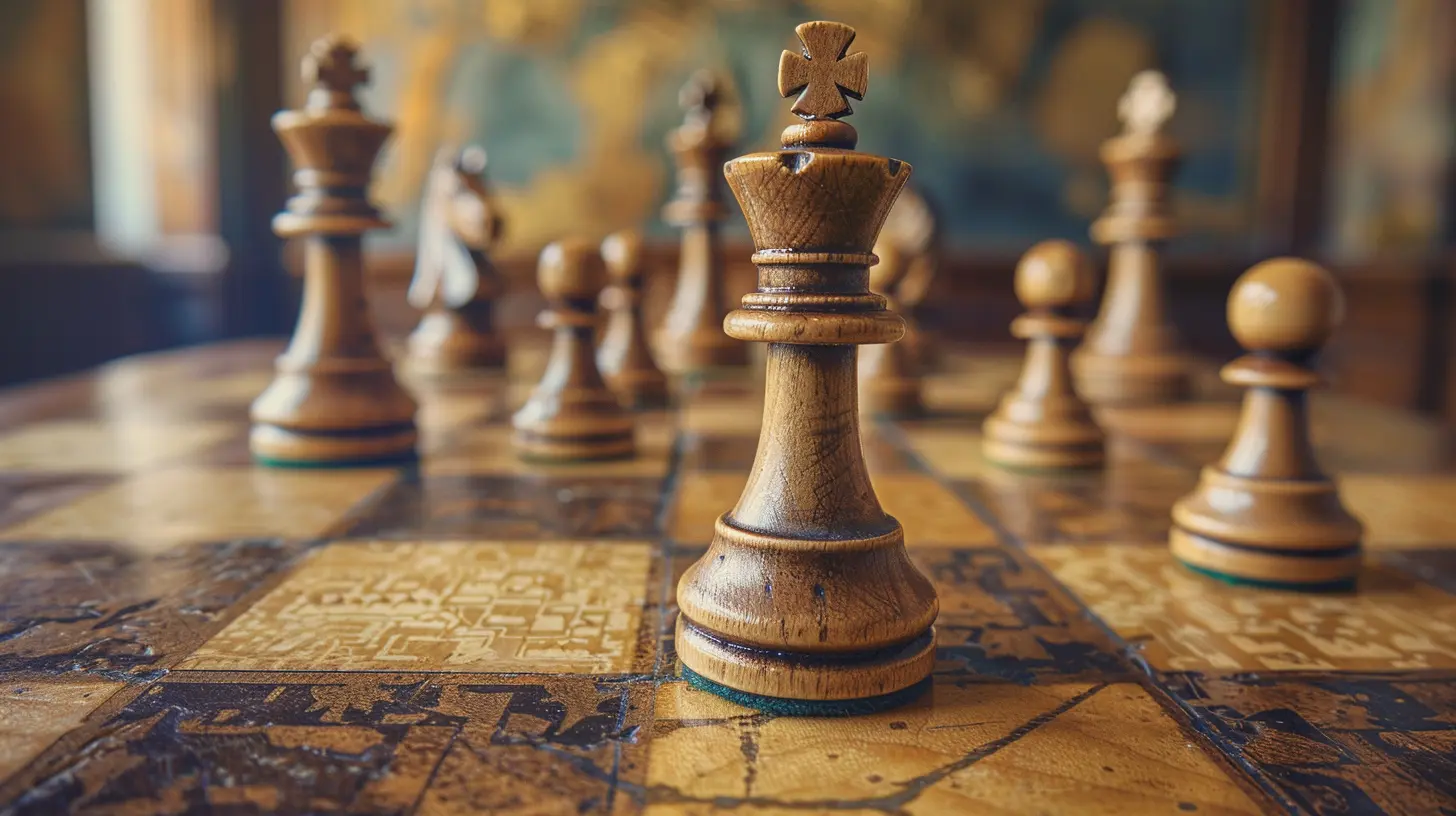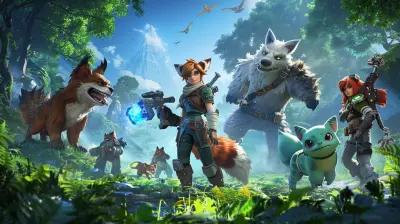The Role of Resource Management in Long-Term Game Success
4 November 2025
Do you ever find yourself glued to a game for hours—maybe even weeks or months—just because managing your in-game stash is weirdly satisfying? Whether it’s gold coins, wood, mana, troops, energy, or those ever-so-elusive gems, resource management is the secret sauce that keeps us coming back for more.
But wait… why is it such a big deal? Is it just about hoarding stuff and upgrading buildings? Or is there more to this core gameplay mechanic than meets the eye?
Well, grab your pickaxe and potion bottles, because we’re diving deep into the wonderfully strategic world of resource management and how it plays a crucial role in long-term game success.
What’s Resource Management Anyway?
Alright, let’s start at square one. Resource management in games refers to how players collect, spend, grow, and sometimes gamble various in-game items or currencies to progress.These items can include:
- Natural Resources (wood, stone, iron)
- Currencies (gold, credits, gems)
- Time and Energy (Yes, time can be a resource!)
- Units or Troops
- Crafting Materials
Think of it like budgeting, but with more dragons and fewer spreadsheets.
Why It’s a Game-Changer (Pun Intended)
So why does it matter? Let me hit you with the truth bomb—it’s because resource management makes things matter. Without limited resources, everything would be too easy, and let’s be honest, too boring.Good resource management does three things:
1. Creates meaningful choices
Do you upgrade the barracks or the town hall? Build a new unit or save for a mega-spell? These decisions give the game layers.
2. Delivers long-term engagement
Players keep coming back to optimize strategies and stretch resources just right.
3. Balances power and challenge
Resource limitations create tension—a good kind! It forces players to think, re-think, and sometimes rage-quit (but in a fun way).
Real World Examples of Killer Resource Management
Let me throw some classics at you.🌲 Age of Empires
This OG strategy game is a masterclass in juggling food, wood, gold, and stone. It’s not just about gathering; it’s about when and where you invest them. Mismanage your economy, and boom—you’re getting steamrolled by an archer rush.💎 Clash of Clans
Ever been tempted to use those precious gems to instantly finish a building? That’s the genius of Clash. It plays with your willpower and resource priorities. Efficiency is everything here, and those who manage well rise up the leaderboards.🪓 Minecraft
You’d think Minecraft is all fun and cubes—until you try to build a fortress without running out of cobblestone or food. From managing hunger to hoarding diamonds, it’s a quietly brilliant resource economy that keeps players mining “just one more block.”
Resource Management = Player Retention
Here’s the deal—games that nail resource management are sticky. Players don’t just play; they invest. And I’m not talking about money (though, yes, microtransactions exist, let’s not lie to ourselves). I’m talking time, thinking, planning, and strategy.🚀 Progression Feels Earned
When you’ve carefully saved up coins for that epic weapon or upgraded your city after grinding for days, the payout just hits differently. That "Yesss, finally!" moment? Resource management baked it into the experience.🔁 Encourages Daily Play
In many games (mobile ones especially), resources regenerate over time. Energy systems, daily logins, limited-time boosts—they all hook you into daily interactions. It’s like the game keeps whispering, “Come back. We’ve got stuff to do.”🧠 Promotes Strategic Thinking
Want to build an army? Better have enough food. Want to cast a spell? Hope you’ve conserved mana. These trade-offs force players to think ahead—something that adds serious depth and replayability.Balancing the Resource Economy
Okay, so resource management is great, but what happens if it’s done badly? Chaos. Rage. Uninstalls.Developers have to walk a tightrope here. Resource acquisition should feel rewarding, not like a full-time job. If everything costs too much or takes too long, you frustrate players. If it’s too easy, it feels hollow.
The Goldilocks Zone of Game Design
Everything has to be:- Not too easy (or players get bored)
- Not too hard (or they rage-quit)
- Just right (and they stick around for the long haul)
Striking that perfect balance is what separates a one-week wonder from a decade-dominating legend like Civilization or Runescape.
Monetization Meets Resource Management
Don’t pretend you haven’t been tempted by that “Just $1.99 for 500 Gems!” popup. We’ve all been there.Here’s where resource management and monetization cozy up. Games often make premium currency a shortcut—get what you want faster, without grinding.
Ethical Design vs. Pay-to-Win
The good games? They let you manage resources in a way that’s fair. They give paying players convenience, not invincibility. The shady games? They lock progression behind over-the-top resource paywalls. That’s not just lame; it drives players away.Smart devs know that resource management, when paired with fair monetization, can boost revenue without burning out the player base.
Types of Resource Systems in Games
Not all resources are created equal. Some are upfront and visible (like gold), while others are more sneaky or time-based.1. Hard Resources
Gold, wood, iron—stuff you can usually count or collect.2. Soft Resources
Energy, stamina, influence—these recharge over time and limit how much you can play.3. Inventory Space
Not a resource in itself, but managing what you carry? That’s a mini-game in some titles (looking at you, Diablo).4. Time
Your most valuable resource. Games like FarmVille or SimCity use real time as a mechanic—you plant now, you harvest in 8 hours.Each of these adds its own spice to the gameplay soup. Mixing and matching different resource types keeps things fresh and fun.
The Psychology of Resource Hoarding
Let's be real—half the fun of RPGs is hoarding potions you never end up using, "just in case." It's a tale as old as time.Why do we do it?
- The fear of future scarcity (what if I need it later?)
- A sense of control over the game world
- The sweet, sweet satisfaction of accumulating wealth
Game devs know this, and they play right into it. Good resource design feeds that collector’s brain while gently nudging you to use what you've got.
How It Impacts Multiplayer Games
Resource management flips into high gear when you’re not alone. In multiplayer games—MMOs, RTS, battle royales—resources become part of the social and competitive economy.🎮 PvP and Guild Resource Strategies
In games like World of Warcraft or Clash Royale, guilds strategize together on resource allocation. Who gets gear first? Who upgrades the base? These decisions can make or break your group’s success.🏆 Trading and Market Systems
Think EVE Online or Albion Online, where in-game markets are player-driven. Resource management becomes economics 101—with spaceships.Common Pitfalls (And How to Avoid Them)
Even the best games can stumble. Let’s talk about common resource management blunders that devs (and players!) should avoid.- ⚠️ Resource Overload: Too many types of resources? Confusing. Players bounce.
- ⏳ Overly Time-Gated: If progress takes five days unless you pay, players feel stuck.
- 💸 Pay-to-Win: Don’t lock power behind premium walls. It kills competition.
- 💤 Resource Stagnation: If resources accumulate with no use, the game gets stale.
Smart systems evolve over time—introducing new mechanics, resource sinks, or events that require fresh strategies.
Tips for Better Resource Management (Hey, We’re Gamers Too!)
Let’s flip the script. Here are some pro tips if you want to master resource management:1. Prioritize Upgrades – Don’t spend resources willy-nilly. Focus on what gives lasting value.
2. Plan Ahead – Don’t just gather resources—know what you’re saving for.
3. Check Daily Events – Often bonuses give massive ROI on resource usage.
4. Be Patient – Sometimes waiting a bit nets better results. Resist the urge to always spend instantly.
5. Don’t Sleep on Storage – Upgrade your capacity. There's nothing worse than wasting resources because you hit the cap.
Final Thoughts: The Real MVP of Game Longevity
When it comes down to it, resource management is like the spine of a great game. It holds everything together—progression, strategy, player engagement, even community.Whether you’re storming castles, building empires, or farming digital turnips, how you manage your loot and labor defines your journey.
So the next time you’re counting coins, rationing health potions, or planning your next character build—just remember—you’re not just playing the game; you’re mastering its heartbeat.
all images in this post were generated using AI tools
Category:
Gaming StrategiesAuthor:

Kaitlyn Pace
Discussion
rate this article
1 comments
Kiera Sharp
Resource management is crucial for sustained success in gaming. It not only influences strategic decision-making but also enhances player engagement. Balancing short-term gains with long-term objectives can elevate gameplay experiences, making resource allocation a key component of both design and player strategy.
November 8, 2025 at 4:10 AM

Kaitlyn Pace
Absolutely! Effective resource management is essential for both engaging players and ensuring long-term success in game design, as it fosters strategic thinking and enhances overall gameplay experiences.


